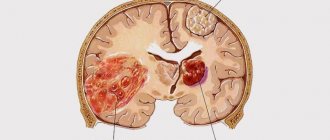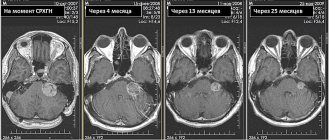It is known that many people love and adore cats, keep them as pets and treat them like family members. However, some people not only do not share the love for these animals, they are terribly afraid of them. Fear of cats is a mental disorder called ailurophobia.
Ailurophobes experience strong fear at the sight of cats or when they approach. If a person suffers from a severe form of phobia, negative emotions may appear in him even when looking at images of these animals and when mentioning them.
Naturally, ailurophobes never have cats and do not allow their family members to do so, otherwise their life turns into a nightmare. But, if in their home they can protect themselves from the object of their fear, then on the street they have a very bad time. Meeting stray animals causes them another attack of panic.
Ailurophobia can affect people of both sexes and all ages. For those who are unable to cope with their fear, the help of a psychologist or psychotherapist would be useful. The result of treatment is often the complete eradication of the fear of cats and a change in attitude towards them from a sharply negative one to a calm one.
Causes
The fear of cats, or the name “ailurophobia,” is quite rare. Nevertheless, this is a common phobia among the modern population, occurring mainly in childhood. Experts agreed and identified a number of reasons contributing to the development of a violation of a person’s psychological state.
These include:
Aggressiveness of the animal
The fear of cats appears due to the fact that the animal is able to fight back the offender. A striking example is the fact when a child takes a cat by the tail. Of course, the animal will not like this much and will give change. This way the baby will get unpleasant pain and scratches. There have been cases when a cat caused very significant harm to a child. However, according to psychologists, all it takes for a phobia to arise is a small scratch.
Parental warnings
Ailurophobia is a fear that can be imposed by parents. Many mothers are so worried about their child that they see mortal danger in everything. From an early age, a child is taught that cats are an irreparable evil. Often parents themselves, without knowing it, suffer from a phobia of fear of cats, having heard stories about how an animal scratched a child’s face or infected it with all kinds of viruses.
Impression after watching the film
In some films, cats are shown as vicious and aggressive animals capable of causing irreparable harm to human health and crippling him. If a child watches such videos, he or she increases the risk of developing ailurophobia in all its manifestations. Some impressionable children developed this phobia even after watching a banal children's cartoon about cats.
Excessive superstition
As soon as a black cat crosses the road, some cross themselves, others grab a button and spit over their left shoulder. Of course, after such a reaction, the child develops a fear of this animal.
Mysterious behavior
In some beliefs, a cat is considered a mystical animal, which is a particular cause for concern for impressionable individuals.
Large breeds
For some people, the fear of cats manifests itself in animals - large predators and is subconsciously transferred to small breeds.
Fear of diseases
Ailurophobia is a fear that arises from the fear of contracting toxoplasmosis. The disease is transmitted through scratches. It poses the main danger to pregnant women, as it causes a serious mutation in the fetus.
Allergy
Ailurophobia or fear of cats also occurs if a person suffers from allergic reactions. Indeed, for the purposes of self-preservation and to avoid unpleasant symptoms, allergy sufferers try to reduce contact with this animal to a minimum.
Increased emotional sensitivity
A phobia of cats can develop in a person who may not have even met this animal in person, but has heard many scary stories.
Fear of unpleasant consequences
Ailurophobe, knowing that an animal is capable of scratching him, begins to fear him, thereby generating unreasonable fear in his psyche.
Parting with your beloved pet
This very unusual reason can provoke the development of ailorophobia, especially if such a tragic moment occurred in childhood.
Basically, the problem of fear of cats is far-fetched and is a psychosomatic disorder that can lead to serious consequences. In order not to make your life worse and to recognize the disease in time, you need to clearly know the clinical picture of ailurophobia.
Causes of ailurophobia
Ailurophobia is a fear of cats, which over time turns into a pathological disorder. The causes of uncontrollable fear are hidden in the subconscious. Excessive anxiety is a protective reaction of the psychological state to stress factors.
Ailurophobia causes
The reasons for the development of fear of cats are:
- Traumatic situations from the past, directly related to contact with a cat. In childhood, a child often plays with a cat. During play, the pet accidentally scratches, bites, or may scare the child by accidentally jumping. Over time, the baby tries to avoid contact with cats. As people grow older, fear takes the form of a pathological anxiety disorder. Sometimes the provoking factors can be psychological trauma that is not related to the behavior of the animal.
- Unpleasant situations that occurred after contact with a cat. For example, after playing with a kitten, the child developed scratches on his body that festered and caused pain. Parents punish the child for such communication with the animal and forbid him to play with him. Fear of cats arises after performing unpleasant procedures - rabies injections, dressings, treating wounds. Infection with parasites from the cat family is also a cause. Long and unpleasant treatment causes the child to fear cats.
- Excessive emotionality, strong sensitivity and strong impressionability provoke the development of a phobia. Usually, the fear of cats develops in impressionable people who have not even had contact with them. The reason in this case is the stories and stories of strangers who have suffered from pets. Often adults tell children negative stories about cats in order to warn them against communicating and playing with animals. Any negative information is formed and stored in the child’s subconscious, which over time develops into a phobia.
- Superstitions and folk signs influence the development and formation of ailurophobia. The main superstition among many peoples is the fear of a black cat. An unexpected encounter between a person and a black cat can lead to an anxiety disorder. People who are too superstitious and emotional try to completely avoid encounters with cats. Severe anxiety can lead to the development of a pathological disease.
Symptoms of the disease
Due to the fact that people suffering from ailurophobia seek help extremely rarely and in advanced forms, it is possible to protect yourself from such an unpleasant situation. Most often, a person suffering from this phobia experiences dramatic changes in their behavior.
- Deterioration in general health. Ailurophobia is a fear that causes an increase or decrease in blood pressure, causing the skin on the sufferer's face to turn red or pale. At the same time, with a change in the color of the skin, an increased heart rate begins, breathing becomes more frequent and sweating increases.
- Fear of going outside. People suffering from this disorder are terrified to go outside. This is due to the fact that there are thousands of stray cats in open space, ready to approach a person at any moment. Psychologists have observed that cats tend to approach precisely those who are most afraid of it.
- Fear of visiting certain places. Ailurophobes avoid places where the risk of a collision with a cat is maximized. For example, they do not go to the market, and buy food exclusively in supermarkets.
- Reluctance to visit certain friends. Ailurophobia is a fear that can even destroy friendships. A person with a phobia of cats will never cross the threshold of his best friend’s home if there is even a small kitten there.
- Toys. A true ailurophobe is afraid of even toy cats. One type of such product can provoke a panic attack and a feeling of rejection.
In addition to the above symptoms, a person suffering from ailorophobia may also experience:
- Severe headache;
- Dizziness;
- Suffocation;
- Trembling of limbs;
- Sharp chest pain;
- Darkening in the eyes;
- Loss of balance;
- Increased urge to urinate;
- Hot flashes or severe chills.
Symptoms of cat fear and their diagnosis
Symptoms can be divided into physical and psychological. The latter include avoidance of the object of fear, anxiety at the mere thought of cats, an excited state, and panic attacks.
Autonomic symptoms:
- increased sweating;
- cardiopalmus;
- high blood pressure;
- nausea;
- chills;
- general weakness;
- dizziness;
- headache;
- chills;
- other individual reactions.
The course of ailurophobia is individual; during diagnosis it is necessary to identify the severity of anxiety.
When diagnosing, it is worth paying attention to characteristic changes in personality behavior:
- General weakness, deterioration in general health. A fearful person turns red or pale, his limbs freeze, his blood pressure drops or rises, and his heartbeat slows or increases. Depending on the strength of the fear, the list of symptoms expands and their severity intensifies.
- Fear of leaving the house. On the street, at every step you can meet a stray cat; most people also have representatives of this species living in their homes. These facts force a person to isolate himself within the four walls of his home.
- Avoidance of specific places. This category includes those places where a person has already encountered cats. Or those places where the likelihood of encountering animals is higher, for example, in a market square or in specialized cafes.
- Reluctance to visit people who have cats. This factor limits a person’s social activity and can deprive him of friends and acquaintances.
- Fear of toys, photographs, drawings depicting cats. This specific behavior is observed in advanced stages of ailurophobia.
This is interesting! In ICD-10, fear of cats does not have a special code; it is classified as a specific (isolated) phobia, code F40.2.
Ailurophobia test
There is no specific test for identifying fear of cats. But in the diagnostic process, any tests for identifying anxiety disorders and phobias as such, for example, the Zang scale, can be used.
How does ailurophobia occur?
Fear of cats, or galeophobia as it is called, develops not only in childhood, but also in adulthood. Even if a person has loved cats since childhood, this does not mean that in later life he will not develop such an unpleasant phobia, especially if psychological trauma has previously been inflicted.
Ailurophobia most often occurs in three forms:
- When an animal approaches, a person experiences unpleasant sensations, resulting in severe fear.
- Attacks of severe uncontrollable panic occur, even if the animal is simply in the field of view of the sufferer.
- Constant and obsessive thoughts that there is an animal everywhere that is preparing to attack the sufferer. The patient constantly looks around and is in a nervous and hysterical state.
Absolutely any irritant associated with the presence of cats can provoke such reactions. Most often, ailurophobia is frightened by:
- Direct physical contact with the animal;
- Directly directed gaze of a cat;
- Abdominal movement directed towards a person;
- Touching the body or seeing cat hair;
- Live or audio recorded meowing and purring of an animal;
- Opportunity to meet a cat in the dark.
In addition, if you ask the patient directly the reason why he is so afraid of cats, the answer you will hear is:
- The ability of an animal to scratch or bite, thereby causing irreparable injury to it;
- Infect with worms or other infections;
- Abnormal fear. The person does not know why he is afraid, but he is unable to control the phobia.
Symptoms of ailurophobia
A person cannot claim to have ailurophobia if there are no physical symptoms of the disease. Vegetovascular reactions are always present in phobias. They can appear all together or separately. It's very individual. If a cat evokes only negative emotions, and the body does not react in any way, then there is no phobia. Check your symptoms. Only a doctor can make an accurate diagnosis.
Symptoms of a cat phobia
- Panic attacks.
- Dizziness.
- Feeling of suffocation.
- Fear that is uncontrollable.
- Increased heart rate and blood pressure.
- Feeling of a lump in the throat.
- Tremor (trembling in the hands, in the body, lips may tremble).
- Presyncope.
- Digestive system disorder.
Symptoms may vary. Possible fainting, pain in the heart, darkening of the eyes.
How to get rid of ailurophobia
Despite the apparent simplicity of this disease, ailurophobia can cause significant harm to a person not only in relationships with people close to him, but also lead to nervous exhaustion. Therefore, recognizing the presence of a problem, in order to avoid negative consequences, you must urgently begin to deal with it yourself or with the help of a specialist.
Self-treatment of ailurophobia
Ailurophobia is a fear that society does not take seriously. In order to become a full-fledged member of society, it is very important to overcome your fear of cats. Otherwise, a person with such a phobia will definitely not be considered adequate.
A way out of this situation can be found by following this action plan:
- Awareness of the problem itself. Only by accepting the fact of the presence of the disease can one begin to search for ways to cure it. You shouldn’t hide from everyone and be completely alone. This will not lead to anything good, but will only worsen your mental state.
- Return of reality. With every panic attack, you need to remember that cats are small predators and they are absolutely neutral towards humans. Their interest is solely in the home, and not in its owner.
- Get a kitten. Psychologists call this method “knocking out wedges with wedges” and in some cases it is effective. If you are not allergic, you can purchase or adopt a pet from the street. In addition, it has been repeatedly proven that cats are able to calm and bring positive emotions to their owners.
- See only the positive aspects. Cats on a subconscious level feel their owner’s sore spots, so very often they like to kiss them. In addition, cats are excellent nannies and are able to lull a child and even an adult to sleep with their purring.
- Watching an extremely positive video. It is better to avoid watching films and stories that show how wild animals attack humans. Today you can find many works showing cats from a completely different side, unfamiliar to the ailurophobe.
- Get pictures of cats. People with a true phobia are afraid even of a photograph of a cat. Therefore, ideally, various posters depicting such a harmless animal will help overcome fear.
If you cannot overcome ailurophobia on your own, you should definitely seek help from an experienced psychologist.
Treatment of ailurophobia by a psychologist
Fear of cats in ailurophobia is the main cause of severe psycho-emotional disorders, which can only be stopped with the help of a specialist. Most often, he can offer the following treatment methods:
- Cognitive - behavioral method of treatment. This method helps sufferers identify the cause of their phobias thanks to well-posed questions from a psychologist. As a result, a person understands that cats do not pose any danger to him and all his fears are simply far-fetched.
- Hypnosis. Used in complex therapy with the above method. The specialist frees consciousness at a subconscious level, after which, in further therapy, he thinks through how best to help his client.
- Drug treatment. Under the supervision of a doctor, medications are often prescribed to alleviate the symptoms of ailurophobia. Most often these are sedatives, antidepressants, tranquilizers and antipsychotics.
- Phytotherapy. It is considered a non-standard, but very effective method in reducing symptoms and treating this disease. The essence of herbal medicine is to take drugs exclusively of plant origin. It is not recommended to carry out such treatment on your own.
Treatment of ailurophobia
It is better to entrust the treatment of cat phobia to a psychotherapist. The doctor will find the cause and eliminate it on a subconscious level. Psychotherapy is used for this. The psychologist finds the cause of the disease by asking questions. Then work on them begins. If the phobia was caused by the death of a cat, the psychologist will show the situation from the other side. Negative emotions will be eliminated: death is the natural end of life, cats live less than people. But this is not a reason to be afraid of them or worry too much. Everything that a person cannot change must be accepted.
The psychologist will try to develop positive associations with the subject of the phobia. In different cases it will take from several weeks to several months. Sedatives will also be prescribed if necessary. They will help eliminate the physical manifestations of the phobia.
Some interesting facts about ailurophobia
History has shown that ailurophobia is a fear that has been around for a long time. Such famous personalities as suffered from it:
- Mussolini;
- Napoleon Bonaparte;
- Adolf Gitler;
- Genghis Khan;
- Julius Caesar;
- Alexander the Great.
Despite their fame, these people did not hide their fear of such a cute animal. Therefore, there is no need to be ashamed of your phobias. They need to be recognized and, if necessary, seek help from specialists. After all, this is the first step on the path to recovery.
Topic: Mental health, Overcoming fears
Ailurophobia - fear from childhood
This type of phobia can appear at any age, but most often the fear begins to form in childhood..
The main causes of ailurophobia:
- Personal negative experience with cats. The child’s psyche can be negatively affected by both the unpleasant painful sensation from a bite or scratch, and severe fear after an unexpected aggressive reaction of the animal to the child’s desire to play.
- Negative associations. In this case, the irrational fear is not associated with the cat, but with memories of the unpleasant consequences of communicating with this animal. For example, the child was very strongly scolded by his parents or there was a need to see a doctor, where the child had to endure frightening and painful procedures.
- Excessive emotionality and impressionability of a person. A person who is too suspicious can be left with an indelible impression by someone’s story about the experience of a cat attack and its consequences.
Incorrect actions by parents can also perpetuate children’s fear. When warning their children, mothers often focus their child’s attention only on the fact that the animal may unexpectedly bite or scratch. As a result, the baby develops a false idea about cat habits. The child sees only a threat in the animal, although in reality it is not the cat itself that is dangerous, but the improper handling of it.
What is ailurophobia
Ailurophobia (from the Greek “cat”) is what the fear of cats is called. It is associated with panic fear at the sight of an animal or at the thought of it. A phobia can take different forms. It has another name - felinophobia (from Latin felinus “feline”, Gr. phobos “fear”).
Patients with ailurophobia fear that:
- a cat can bite, scratch, pierce the eye with a claw;
- when bitten, parasites and pathogens of infectious diseases can enter the body;
- The cat has magical powers and can cause damage.
It happens that people understand that an animal does not pose any threat, but continue to be afraid of it. Our ancestors had this phobia. They were wary of this tailed creature because it was associated with witches and magic. Folk signs and beliefs instill fear in a person at the sight of a black cat. The fear of black predators is genetically embedded in us. Ancient people were afraid of cats because they were invisible in the dark.
A person is afraid of cats: how to understand
This phobia manifests itself in different ways, so it is not immediately possible to recognize it. With a mild form of the disorder, others may not notice the deviations. Such a person is no different from ordinary people. His behavior changes only when a cat appears.
Scared by a cat
There are signs by which we can suspect a friend has a fear of cats:
- When asked to come visit, he will ask if there is a cat in the house. And if yes, then he refuses the invitation.
- He avoids contact with the cat - he does not allow it to approach him or pushes it away.
- The person gets nervous and constantly looks around if he hears meowing.
- He reacts unnaturally to the appearance of an animal in his field of vision or to its image: his facial expression changes, he turns pale or red.
Treatment of pathological fear
This mental disorder requires careful attention to such patients and corrective measures. Highly qualified help from a psychotherapist will help you get rid of the existing problem as quickly as possible.
Treatment of this phobia is based on psychotherapy and, in some cases, medication. The latter is justified only when the phobia becomes very pronounced. In this case, preference is given to drugs that have a sedative property. Sedatives and antipsychotics make it possible to relieve obsessive feelings of fear and panic attacks, improve the patient’s sleep and relieve him of nightmares.
Regarding psychological assistance, it should be said that the key point in this case is the use of an individual approach. In this way, it is possible to identify the true causes of the phobia and eliminate its consequences. The doctor can resort to hypnotic influence on the patient, which allows him to draw out circumstances hidden deep in the patient’s memory that traumatized his psyche.
In addition to the treatment methods listed above, group classes in the form of trainings are actively used, the purpose of which is to work through internal problems and fears. As part of such trainings, correction of the patient’s mental state is carried out through art therapy, visualization and games, where situations are created in which patients learn to cope with their condition.
When faced with a fear of cats, a person needs to understand that any fear can be overcome. The main thing in this situation is to recognize the problem and make efforts to eliminate it. And in such circumstances, psychotherapeutic assistance will help eliminate existing discomfort and gradually relieve the person from unpleasant sensations.
Consequences of ailurophobia
This type of disorder can seriously limit the life of a modern person. The patient is not always able to eliminate the object of his fear from life. Even if an ailurophobe avoids houses where a cat is kept, when moving along the street it is almost impossible to avoid meeting a frightening animal.
For some fear-prone people, it is stray cats that cause the greatest fear; people mistakenly believe that a stray animal will definitely attack. The fear is aggravated by the fact that an unkempt cat is perceived as a carrier of various diseases and parasites.
Causes of Gatophobia
At first glance, the average person's fear of cats, cute and fluffy creatures, seems absurd and funny .
But such fear actually exists and is not something new; many are afraid of cats just as some individuals are afraid of, for example, dogs, which is common.
There are a number of possible explanations for the fear of cats:
- A common trigger for ailuphobia is observing other people's fearful reactions to cats. A child may develop this fear by watching their parent or caregiver (or even cartoon characters on TV shows) behave strangely towards felines.
- Women are known to acquire gatophobia by watching TV shows or movies where female characters typically show fear by jumping on a chair or running away to avoid cats. This notion is further strengthened by the fact that the masculine nature is shown to protect her from the animal.
- Felines are predatory by nature . They were often associated with witchcraft, folklore, and evil. Even tame cats may growl, hiss, or scratch. By observing this behavior of an animal, a child (or even an adult) directly or indirectly leads himself to this phobia.
- Killing or harming felines is considered a punishable offense in many cultures, especially among the ancient Egyptians, where cats were revered and mummified or preserved. Such religious sentiments can also lead to a fear of cats, especially in the minds of people who are already experiencing a crisis or who are naturally highly anxious or overly anxious.
- Childhood traumas are often the causes of phobias. An animal in an aggressive state can cause great harm to a child who, through negligence, hurt or tormented the cat.
Fear of cats can be identified by the following symptoms that accompany the phobia.











